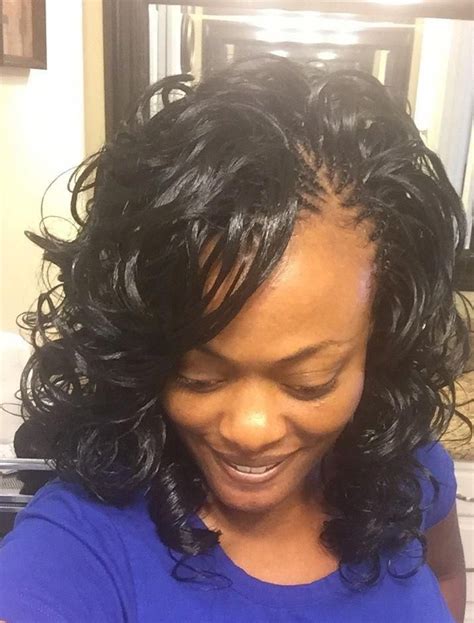Introduction
Human hair tree braids, an intricate and visually captivating braiding style, have been gaining immense popularity in recent years. This intricate style, characterized by its resemblance to a tree’s trunk and branches, offers a blend of cultural heritage and contemporary fashion. This comprehensive guide will delve into the captivating world of human hair tree braids, exploring their origins, techniques, benefits, and applications.

Unraveling the Origins of Tree Braids
Tree braids have a rich history that spans multiple cultures. Their roots can be traced back to ancient Africa, where tribes adorned their hair with elaborate braids that often resembled tree trunks and branches. These braids held cultural significance and symbolized spirituality, lineage, and community ties. Over time, tree braids traveled across continents, influencing hair braiding practices in the Caribbean, Americas, and beyond.
Unveiling the Techniques of Tree Braids
Creating human hair tree braids requires skill, patience, and a meticulous approach. The braiding process typically involves the following steps:
- Sectioning the Hair: The hair is divided into small sections, with the crown section being the starting point.
- Creating the Core: A small cornrow or French braid is created at the root of each section, forming the “trunk” of the tree braid.
- Adding the Branches: Sections of hair from the sides are added to the core braid, creating the “branches.” These branches are braided over and under the core braid, forming a cascading effect.
- Finishing the Braid: The braid is continued until the desired length is achieved. The ends of the hair are secured with elastic bands or yarn.
Exploring the Heart of Human Hair Tree Braids
The captivating beauty of human hair tree braids lies in their intricate patterns and distinctive features:
- Tree-Like Structure: The braids resemble the trunk and branches of a tree, creating a visually striking and organic look.
- Versatility: Tree braids can be customized in length, width, and color, allowing for endless variations to suit individual preferences.
- Protective Styling: Tree braids protect the hair from damage, breakage, and split ends, promoting hair growth and health.
- Cultural Expression: Tree braids hold significant cultural and spiritual meanings in various African and Caribbean traditions.
Addressing the Motivations and Desires of Hair Enthusiasts
The allure of human hair tree braids stems from the deep-rooted motivations and desires of hair enthusiasts:
- Unique Expression: Tree braids offer a distinctive and eye-catching style that allows individuals to express their creativity and individuality.
- Cultural Connection: For those with African or Caribbean heritage, tree braids provide a tangible link to their cultural roots.
- Low Maintenance: Compared to other intricate braiding styles, tree braids require relatively low maintenance, making them a convenient choice for busy individuals.
- Protective Styling: The protective nature of tree braids appeals to individuals who prioritize hair health and want to minimize hair damage.
Tackling Pain Points and Motivations
Despite their beauty and popularity, human hair tree braids come with some potential pain points and motivations:
- Time-Consuming: The braiding process can be lengthy, taking several hours to complete.
- Potential for Tension: Tightly braided tree braids can result in scalp discomfort.
- Styling Challenges: Washing and styling tree braids can be challenging, especially for those with thick or long hair.
- Professional Braiders: Creating intricate tree braids often requires the expertise of professional hair braiders.
Diving into the Benefits and Drawbacks of Tree Braids
To make an informed decision, it is essential to weigh the benefits and drawbacks of human hair tree braids:
Benefits:
- Unique and visually captivating style
- Protective against hair damage and breakage
- Cultural significance and expression
- Relatively low maintenance
Drawbacks:
- Time-consuming to braid
- Potential for scalp discomfort
- Challenges in washing and styling
- May require professional braiding skills
Expanding the Applications of Tree Braids
The versatility of human hair tree braids extends beyond traditional hair braiding. They can be used in various applications to create unique and inspiring hairpieces:
- Fairy Tale Hair Extensions: Tree braids can be integrated into hair extensions, adding a touch of fantasy and charm to any hairstyle.
- Bridal Accessories: Intricate tree braids can adorn bridal headpieces, creating stunning and unforgettable wedding hairpieces.
- Fashionable Accessories: Tree braids can be used to fashion unique hair clips, headbands, and hair wraps, adding a playful and stylish touch to any outfit.
- Artistic Installations: Tree braids can be incorporated into art installations, transforming hair into a medium for creative expression.
Conclusion
Human hair tree braids have emerged as a captivating and versatile braiding style that blends cultural heritage with contemporary fashion. Their intricate tree-like structure, protective qualities, and cultural significance make them a compelling choice for hair enthusiasts seeking unique expression and hair health. Whether you prefer traditional braids or explore innovative applications, human hair tree braids offer a pathway to embrace beauty, individuality, and cultural connection.
